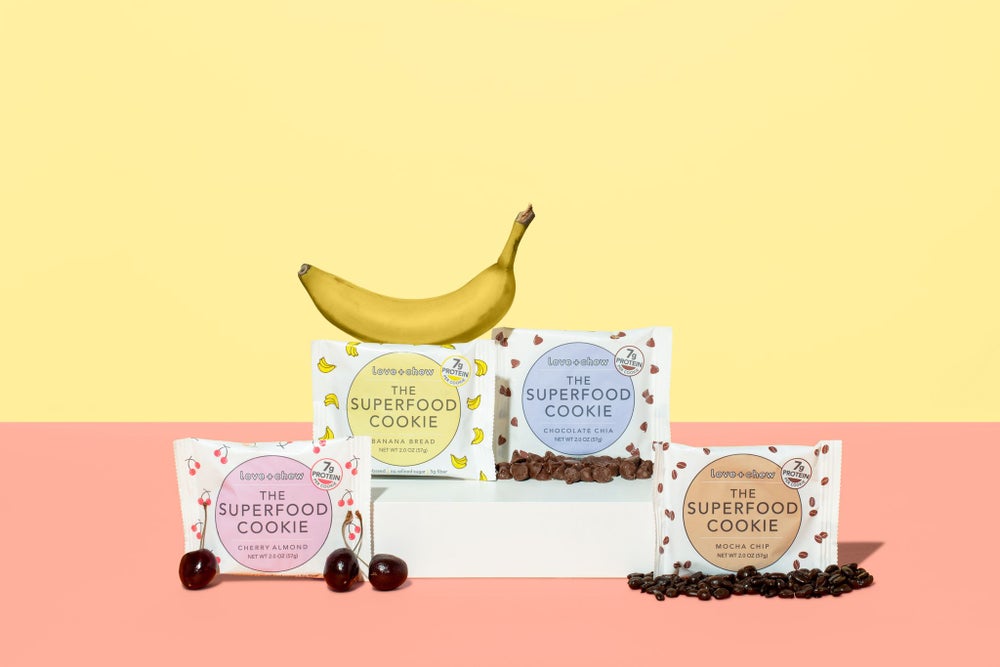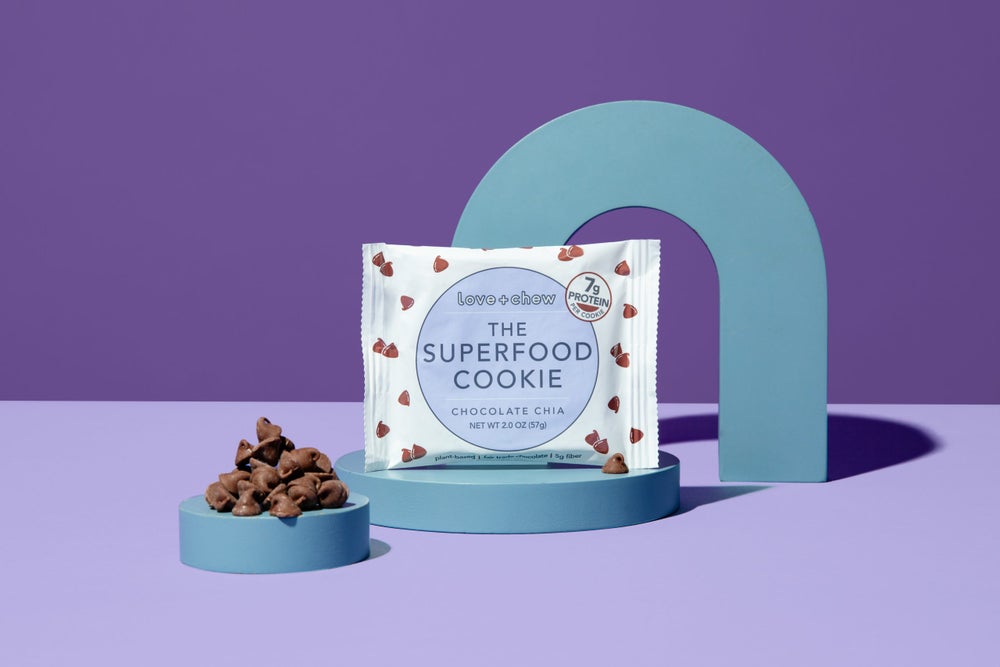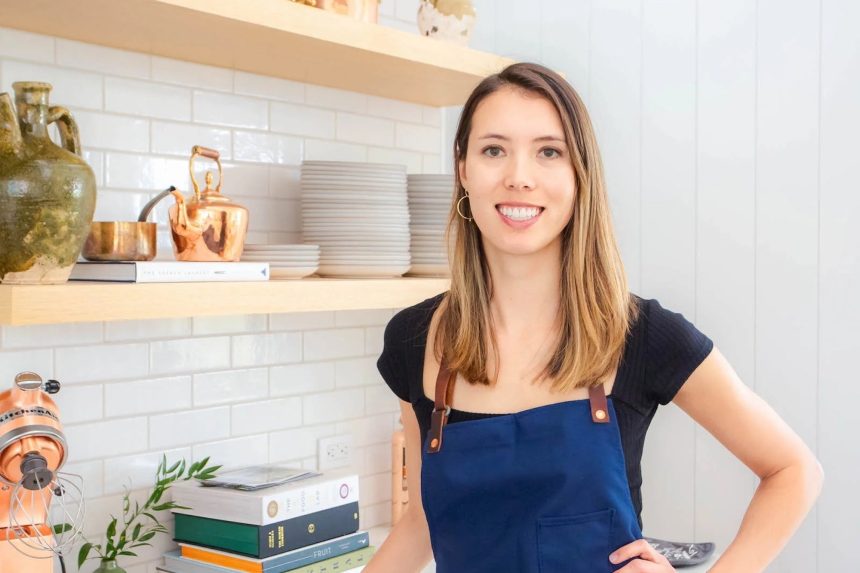This Side Hustle Spotlight Q&A features Lauren Chew, founder and CEO of plant-based cookie brand Love+Chew. In 2023, Chew scaled her business from $1 million to $3 million and is on track to bring in $5 million to $6 million this year, per the company. Responses have been edited for length and clarity.
Image Credit: Courtesy of Love+Chew. Lauren Chew.
What was your day job (or other sources of income) when you started your side hustle?
I was working in the renewable energy space at a startup called Stem, mostly doing sales and business development. Before that, I was an assistant to an executive at SolarCity (Tesla). I always knew that I wanted to be some sort of entrepreneur, and I figured learning sales at a small startup would be a good way to prepare for this.
Related: These Grandparents Make $10,000 a Month on Their Delivery Side Hustle, With Free Workcations — ‘We Hit a Hotel With a Pool’
When did you start your side hustle, and where did you find the inspiration for it?
I’ve been a lifelong baker, but it wasn’t until I started living a more plant-based lifestyle that I started experimenting with vegan egg alternatives. I have a huge sweet tooth and didn’t want to give up cookies, muffins and other treats. I realized that chia seeds can act as a binder in plant-based baking, and my goal was to incorporate as many whole foods as possible into my recipes. That’s how I landed on using dates as a sweetener in all my cookie recipes.
What were some of the first steps you took to get your side hustle off the ground?
I started baking in my kitchen and applied for a home cottage license. Then I hit the pavement and gave out samples of my cookies to local grocery stores, coffee shops and even corporate campuses! I didn’t really think Love+Chew could be a full-time, scaled business until I received a large order from a corporate office and realized that my home cottage operation wouldn’t be able to fulfill the purchase order.
 Image Credit: Courtesy of Love+Chew
Image Credit: Courtesy of Love+Chew
What were some of the biggest challenges you faced while building your side hustle, and how did you navigate them?
Selling a nationally distributed food product with a shorter shelf life can have its challenges. The American food distribution system is set up in a way that values longer shelf life, to the detriment of the health of American consumers and the environment. Additionally, distribution and retail is a low-margin business, and we are susceptible to commodity pricing. An example of this is the recent surge in cocoa pricing.
How long did it take you to see consistent monthly revenue? How much did the side hustle earn?
It took a few years to see consistent revenue — it wasn’t until we entered retail during Covid that we began to see consistent orders and understand our velocities in retail. Now you can find us in Sprouts, Whole Foods Market and select Costcos. We are also preparing for some more launches later this year. Last year, my side hustle earned $3 million in revenue.
Related: He Spent a Weekend Working on His Side Hustle in an Airbnb. Then a ‘Big Breakthrough’ Led to $53 Million — and Counting.
You’ve since taken the business full-time. What motivated that decision?
It got to a point where I needed to solely focus on the business. [We] acquired some large customers, and I realized that my cookie business was more than a proof of concept and had some legs as a business. I am also passionate about helping change our broken food system. In the U.S., it is all about scale and national distribution. That means that shelf life is important, and food scientists keep formulating products that last on the shelf longer, which is good for business but bad for human health. I wanted to create a product that was easily accessible but not formulated with ingredients such as gums, stabilizers or sugar alcohols. Seeing my product nationally on shelves has been rewarding because I feel like I am helping solve the broken food system.
 Image Credit: Courtesy of Love+Chew
Image Credit: Courtesy of Love+Chew
What do you enjoy most about running this business?
I am still learning every day! When I started my business, I knew nothing about running a business or CPG — it was 100% learning by doing. As the business grows, it has different needs, and I find that I need to refine my skill set to keep up, whether it’s learning how to dig into a P&L, managing an HR process such as an annual review, presenting to a new grocery buyer or pitching a new marketing strategy. We spend a lot of time doing work, so it’s important to love what we’re doing and have a “why” as to why we are doing it. It can’t just be about the money.
Related: She Had Less Than $800 When She Started a Side Hustle — Then This Personal Advice From Tony Robbins Helped Her Make $45 Million
What’s your advice for others hoping to start successful side hustles or full-time businesses of their own?
You just have to go ahead and get started! I find that is the biggest hurdle with most aspiring entrepreneurs. It can be as small as committing an hour a day, or even an hour a week, to see if you feel passionate about what you are creating and go from there. Also, identify your “why” for starting your business — there will be hard times, and your “why” will get you through these times. Don’t start a business for the sake of being an entrepreneur or status or just to make money — this will not be enough during the days you want to quit.
This article is part of our ongoing Women Entrepreneur® series highlighting the stories, challenges and triumphs of running a business as a woman.
Read the full article here










